What Are Dry Type Transformers? Types, Construction, and Typical Uses Explained?
Are you struggling to understand the complexities of dry type transformers? You’re not alone. Many engineers and project managers find themselves overwhelmed by the technical jargon and variety of options available. But what if you had a clear, comprehensive guide that breaks down everything you need to know about dry type transformers?
Dry type transformers are electrical transformers that use air or resin for cooling instead of oil. They come in various types such as cast resin and VPI, and are commonly used in buildings, renewables, and industrial facilities due to their safety, low maintenance, and fire-resistant design. Understanding these transformers is crucial for anyone involved in electrical engineering or facility management.
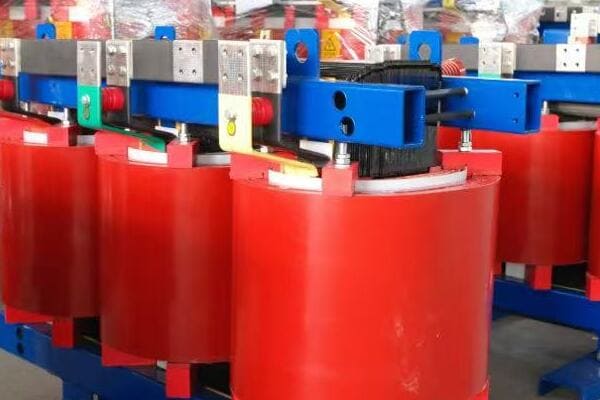
In this comprehensive guide, I’ll walk you through everything you need to know about dry type transformers. We’ll explore their types, construction, and typical applications. Whether you’re a seasoned engineer or new to the field, this article will provide valuable insights to help you make informed decisions about dry type transformers.
What Is a Dry Type Transformer?
Have you ever wondered why some transformers don’t use oil for cooling? This is where dry type transformers come in. But what exactly makes a transformer "dry," and how does it differ from traditional oil-filled transformers?
A dry type transformer is an electrical transformer that uses air, resin, or other non-liquid materials for cooling and insulation instead of oil. It typically consists of a core, windings, and solid insulation materials. These transformers are known for their safety, low maintenance requirements, and suitability for indoor installations. They’re particularly valued in environments where fire safety is a primary concern.
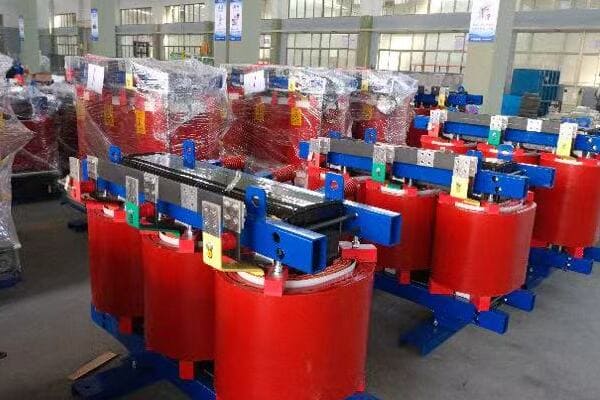
Understanding Dry Type Transformers
Let’s break down the key aspects:
- Definition and Basic Concept
- Cooling and Insulation Method
- Key Advantages
- Typical Voltage Ranges
- Environmental Considerations
Definition and Basic Concept
A dry type transformer is:
- An electrical transformer without liquid cooling
- Designed for enhanced safety and reduced maintenance
- Suitable for indoor and environmentally sensitive locations
I recently visited a newly constructed data center where dry type transformers were chosen specifically for their fire safety features and minimal maintenance needs.
Cooling and Insulation Method
Dry type transformers use:
- Air natural (AN) or air forced (AF) cooling
- Solid insulation materials like epoxy resin
- Heat dissipation through radiation and convection
During a factory tour, I observed how modern epoxy resins provide excellent insulation while allowing for efficient heat dissipation, a crucial factor in transformer performance.
Key Advantages
Main benefits include:
- Reduced fire risk
- No oil leakage concerns
- Lower maintenance requirements
- Environmentally friendly design
Here’s a quick comparison with oil-filled transformers:
| Aspect | Dry Type | Oil-Filled |
|---|---|---|
| Fire Risk | Low | Higher |
| Maintenance | Minimal | Regular oil checks |
| Environmental Impact | Low | Potential oil leaks |
| Indoor Use | Ideal | Limited |
Typical Voltage Ranges
Dry type transformers are commonly used in:
- Low voltage (LV) applications: up to 1kV
- Medium voltage (MV) applications: 1kV to 36kV
- Some high voltage (HV) applications: up to 72.5kV (less common)
Environmental Considerations
These transformers offer:
- No risk of soil or water contamination
- Easier disposal at end of life
- Suitability for environmentally sensitive areas
Key points about dry type transformers:
- They use air or solid materials for cooling instead of oil
- Offer enhanced safety features, especially for fire-sensitive areas
- Require minimal maintenance compared to oil-filled transformers
- Are ideal for indoor and environmentally sensitive installations
- Typically used in low to medium voltage applications
In my experience, understanding the basic concept of dry type transformers is crucial for proper application and selection. I recall a project where switching to dry type transformers in a high-rise office building not only improved fire safety but also simplified the building’s overall electrical system design.
For instance, in a recent renovation project for an old industrial complex being converted into a mixed-use development, we chose dry type transformers for their safety profile and ease of installation. This decision proved invaluable as it allowed for more flexible placement of electrical rooms without the need for extensive fire suppression systems.
As we move on to discuss the key types of dry type transformers, keep in mind how these basic characteristics influence their design and application. Understanding these fundamentals will help you appreciate the differences between various types and their suitability for specific projects.
Key Types of Dry Type Transformers (with Pros & Cons)?
Are you confused by the various types of dry type transformers available in the market? Understanding the differences between these types is crucial for selecting the right transformer for your specific needs. But what are the main types of dry type transformers, and how do their pros and cons stack up against each other?
The main types of dry type transformers include Cast Resin Transformers (CRT), Vacuum Pressure Impregnated (VPI) Transformers, and Encapsulated/Enclosed Dry Type Transformers. Each type has its own advantages and limitations. CRTs offer excellent moisture resistance, VPIs are cost-effective for complex designs, and encapsulated types provide superior protection in harsh environments. The choice depends on factors like installation environment, budget, and specific application requirements.
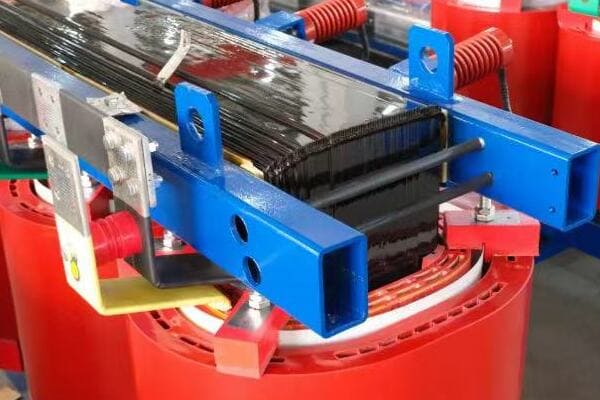
Exploring Dry Type Transformer Types
Let’s examine the key types:
- Cast Resin Transformers (CRT)
- Vacuum Pressure Impregnated (VPI) Transformers
- Encapsulated/Enclosed Dry Type Transformers
- Comparison of Types
- Selection Considerations
Cast Resin Transformers (CRT)
Characteristics:
- Windings encapsulated in epoxy resin
- Excellent moisture and pollution resistance
- High short-circuit strength
I recently worked on a project where CRTs were chosen for a coastal industrial facility due to their superior resistance to humid, salty air.
Vacuum Pressure Impregnated (VPI) Transformers
Features:
- Windings impregnated with varnish under vacuum
- Good for complex winding designs
- Cost-effective for certain applications
During a factory visit, I observed the VPI process, which allows for excellent insulation penetration in intricate winding structures.
Encapsulated/Enclosed Dry Type Transformers
Key aspects:
- Fully enclosed design
- Suitable for harsh environments
- Often used in mobile or outdoor applications
Here’s a comparison of these types:
| Type | Pros | Cons | Best For |
|---|---|---|---|
| CRT | High moisture resistance | Higher cost | Harsh environments |
| VPI | Cost-effective, flexible design | Less moisture resistant | Indoor, clean areas |
| Encapsulated | Excellent protection | Limited size range | Outdoor, mobile use |
Comparison of Types
Factors to consider:
- Environmental conditions (humidity, pollution)
- Installation location (indoor vs outdoor)
- Budget constraints
- Specific industry requirements
Selection Considerations
Key points for choosing the right type:
- Assess the installation environment
- Consider future load growth and potential relocation needs
- Evaluate maintenance capabilities and preferences
- Check compliance with local regulations and standards
Key points about dry type transformer types:
- Cast Resin Transformers excel in harsh environments
- VPI Transformers offer cost-effective solutions for many applications
- Encapsulated types provide superior protection for outdoor use
- The choice depends on a balance of environmental, economic, and operational factors
- Consider future needs and potential changes in the installation environment
In my experience, selecting the right type of dry type transformer can significantly impact the long-term performance and reliability of an electrical system. I’ve seen cases where the wrong choice led to premature failure or excessive maintenance costs.
For example, in a recent project for a chemical processing plant, we initially considered VPI transformers for their cost-effectiveness. However, after a thorough analysis of the corrosive atmosphere in the facility, we opted for Cast Resin Transformers. This decision, while more expensive upfront, proved to be more economical in the long run due to reduced maintenance needs and longer service life in the harsh environment.
As we move on to discuss the construction of dry type transformers, keep in mind how these different types influence the internal components and design. Understanding the pros and cons of each type will help you make more informed decisions when selecting transformers for specific applications.
Inside the Construction: Core, Windings, and Insulation?
Have you ever wondered what’s inside a dry type transformer and how its components work together? Understanding the internal construction is crucial for anyone involved in selecting, installing, or maintaining these transformers. But what are the key components that make up a dry type transformer, and how do they contribute to its functionality and efficiency?
Dry type transformers consist of three main components: the core, windings, and insulation. The core, typically made of silicon steel laminations, provides a path for magnetic flux. Windings, usually copper or aluminum, create the magnetic field and induce voltage. Insulation, often epoxy resin or varnish, separates and protects the windings. The design and quality of these components directly impact the transformer’s efficiency, reliability, and performance.
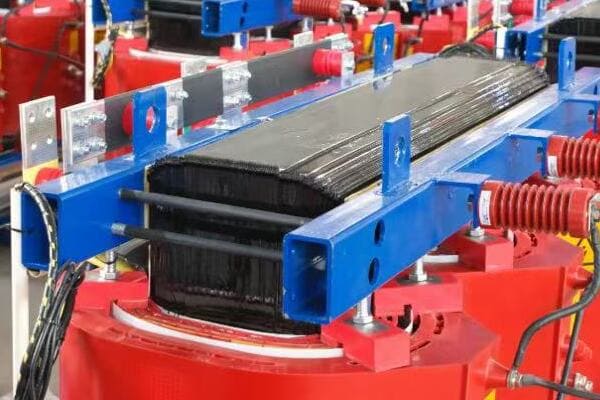
Key Components of Dry Type Transformers
Let’s explore the main parts:
- Core Construction
- Winding Design and Materials
- Insulation Systems
- Cooling Mechanisms
- Structural Support and Enclosure
Core Construction
The heart of the transformer:
- Typically made of grain-oriented silicon steel
- Laminated structure to reduce eddy current losses
- Various core types: shell, core, or wound core designs
I recently examined a new amorphous metal core design that significantly reduced core losses compared to traditional silicon steel cores.
Winding Design and Materials
Crucial for voltage transformation:
- Usually made of copper or aluminum
- Different winding types: layer, disc, or helical
- Designed for optimal electrical and thermal performance
During a factory tour, I observed the precision winding process, which is critical for maintaining consistent performance and efficiency in dry type transformers.
Insulation Systems
Essential for safety and performance:
- Epoxy resin encapsulation or vacuum pressure impregnation (VPI)
- Class F (155°C) or Class H (180°C) insulation systems
- Provides electrical isolation and contributes to heat dissipation
Here’s a comparison of common insulation methods:
| Method | Material | Advantages | Best For |
|---|---|---|---|
| Cast Resin | Epoxy resin | Excellent moisture resistance | Harsh environments |
| VPI | Polyester or epoxy varnish | Good for complex shapes | Indoor, clean areas |
| Encapsulated | Solid epoxy | Superior protection | Outdoor, mobile use |
Cooling Mechanisms
Manages heat generated during operation:
- Natural air convection (AN) in smaller units
- Forced air cooling (AF) with fans in larger transformers
- Heat sinks or cooling fins to increase surface area
Structural Support and Enclosure
Protects and supports internal components:
- Robust frame to withstand short-circuit forces
- Enclosure with appropriate IP (Ingress Protection) rating
- Designed for ease of installation and maintenance
Key points about dry type transformer construction:
- The core provides a low-reluctance path for magnetic flux
- Winding design and materials affect efficiency and capacity
- Insulation system is crucial for safety and longevity
- Cooling mechanism design impacts load capacity and efficiency
- Structural design ensures durability and ease of handling
In my experience, the quality and design of these internal components significantly influence a transformer’s performance and lifespan. I’ve seen how advancements in materials and construction techniques have led to more efficient and reliable dry type transformers over the years.
For instance, in a recent project upgrading an old industrial facility, we replaced outdated transformers with modern dry type units featuring advanced core materials and improved insulation systems. The new transformers not only increased energy efficiency but also reduced the overall footprint of the electrical room, allowing for better space utilization.
As we move on to discuss where dry type transformers are typically used, keep in mind how these construction elements contribute to their suitability for various applications. Understanding the internal structure will help you appreciate why dry type transformers are preferred in certain environments over their oil-filled counterparts.
Where Are Dry Type Transformers Typically Used?
Have you ever wondered why you might see dry type transformers in certain locations but not others? Understanding the typical applications of these transformers is crucial for anyone involved in electrical system design or facility management. But what specific environments and industries benefit most from dry type transformers, and why are they chosen over other types?
Dry type transformers are commonly used in commercial buildings like hotels and hospitals, data centers, server stations, and renewable energy installations such as wind and solar farms. They’re also preferred in high-temperature or humid environments, particularly in the Middle East and Southeast Asia. Their fire-resistant properties, low maintenance needs, and environmental friendliness make them ideal for indoor installations and sensitive areas where safety and reliability are paramount.
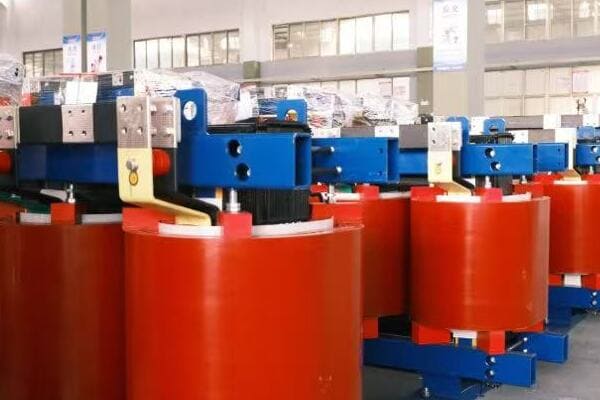
Common Applications of Dry Type Transformers
Let’s explore the main areas where dry type transformers are typically used:
- Commercial and Public Buildings
- Industrial Facilities
- Data Centers and IT Infrastructure
- Renewable Energy Projects
- Special Environments and Regions
Commercial and Public Buildings
Widely used in various settings:
- Office buildings and high-rise structures
- Hotels and shopping malls
- Hospitals and healthcare facilities
- Educational institutions
I recently worked on a project for a new hospital wing where dry type transformers were chosen for their safety features and minimal maintenance requirements, crucial in a healthcare setting.
Industrial Facilities
Common in manufacturing and processing plants:
- Chemical and pharmaceutical industries
- Food and beverage processing plants
- Automotive manufacturing facilities
- Textile and paper mills
During a recent upgrade of a food processing plant, we installed dry type transformers to eliminate the risk of oil contamination, a critical factor in food safety.
Data Centers and IT Infrastructure
Critical for modern digital infrastructure:
- Server rooms and data centers
- Telecommunications facilities
- Network operation centers
- Cloud computing facilities
Here’s a quick overview of dry type transformer applications in different sectors:
| Sector | Application | Key Benefit |
|---|---|---|
| Commercial | Office buildings | Fire safety, low maintenance |
| Healthcare | Hospitals | Reliability, clean operation |
| Industrial | Manufacturing plants | No oil leaks, compact size |
| IT | Data centers | High efficiency, reduced fire risk |
Renewable Energy Projects
Increasingly used in green energy installations:
- Wind turbine installations (especially in nacelles)
- Solar power plants
- Hydroelectric power stations
- Biomass energy facilities
Special Environments and Regions
Suited for challenging conditions:
- High-temperature environments (Middle East)
- High-humidity areas (Southeast Asia)
- Offshore and marine applications
- Underground or confined spaces
Key points about dry type transformer applications:
- Ideal for indoor and fire-sensitive environments
- Commonly used in commercial and public buildings
- Essential in modern data centers and IT facilities
- Increasingly popular in renewable energy projects
- Well-suited for harsh environmental conditions
In my experience, the versatility of dry type transformers makes them invaluable in a wide range of applications. I’ve seen how their use can significantly simplify building design and improve safety in various settings.
For example, CHBEB recently provided a fire-resistant (F1 class) dry type transformer solution for a hospital in Abu Dhabi. This installation not only met the stringent safety requirements of the healthcare facility but also offered superior performance in the region’s high-temperature environment.
As we move on to compare dry type transformer brands in China, keep these diverse applications in mind. Understanding where these transformers are commonly used will help you appreciate the specific features and strengths offered by different manufacturers.
Dry Type Transformer Brand Comparison in China (2025)?
Are you finding it challenging to choose between different dry type transformer brands in the Chinese market? With so many options available, it can be overwhelming to determine which manufacturer best suits your needs. But how do the top Chinese brands compare in 2025, and what unique features do they offer?
In 2025, leading Chinese dry type transformer brands include ABB, CHBEB, and SUNTEN Electric. ABB is known for high fire resistance ratings and extensive certifications. CHBEB excels in customization and has strong export experience, particularly for data centers in the Middle East and Africa. SUNTEN Electric offers excellent noise control and quick factory delivery, making them popular for government and industrial park projects. Each brand has unique strengths suited to different application needs.

Comparing Top Chinese Dry Type Transformer Brands
Let’s examine the strengths of leading brands:
- ABB
- CHBEB
- SUNTEN Electric
- Key Factors for Comparison
- Choosing the Right Brand for Your Project
ABB
Strengths and specializations:
- High fire resistance ratings (up to F1 class)
- Extensive certifications (UL, IEC)
- Advanced technology in energy efficiency
I recently worked on a medical facility project where ABB’s F1 class transformers were crucial in meeting strict fire safety regulations.
CHBEB
Notable features:
- Strong customization capabilities
- Extensive export experience, especially in Middle East and Africa
- Specialized solutions for data centers
During a recent data center project in Dubai, CHBEB’s ability to provide customized transformers for the harsh desert environment was a key factor in their selection.
SUNTEN Electric
Key advantages:
- Excellent noise control features
- Quick factory delivery times
- Strong presence in domestic government and industrial projects
Here’s a comparison of these top brands:
| Brand | Key Strength | Best For | Notable Feature |
|---|---|---|---|
| ABB | Fire resistance | Medical, transit projects | Extensive certifications |
| CHBEB | Customization | Data centers, exports | Middle East/Africa expertise |
| SUNTEN | Noise control | Government, industrial parks | Fast delivery times |
Key Factors for Comparison
When evaluating brands, consider:
- Technical specifications and performance
- Customization capabilities
- Certifications and compliance with international standards
- After-sales support and warranty terms
- Cost-effectiveness and delivery times
Choosing the Right Brand for Your Project
Factors to consider in selection:
- Specific project requirements (e.g., fire safety, noise levels)
- Installation environment (indoor/outdoor, climate conditions)
- Budget constraints
- Long-term maintenance and support needs
Key points about Chinese dry type transformer brands:
- ABB leads in fire safety and international certifications
- CHBEB excels in customization and export-oriented projects
- SUNTEN Electric offers quick delivery and noise control solutions
- Brand selection should align with specific project needs
- Consider long-term factors like support and maintenance
In my experience, choosing the right brand often comes down to aligning the manufacturer’s strengths with your specific project requirements. I’ve seen cases where a less well-known brand was the perfect fit due to their specialization in certain areas.
For instance, in a recent renewable energy project in Southeast Asia, we chose CHBEB transformers over more globally recognized brands. Their experience in designing transformers for high-humidity environments and their ability to provide rapid customization proved invaluable in meeting the project’s unique challenges.
Remember, while brand reputation is important, it’s equally crucial to evaluate how well a manufacturer’s specific offerings align with your project’s needs. Don’t hesitate to request detailed specifications, case studies, and even site visits or virtual tours of manufacturing facilities when making your decision.
Conclusion
Dry type transformers offer unique advantages in safety, maintenance, and environmental friendliness. Understanding their types, construction, and applications is crucial for making informed decisions. When selecting a brand, especially in the Chinese market, consider factors like customization capabilities, certifications, and specific project requirements to ensure the best fit for your needs.
Remember, at chbeb-ele, we’re not just sharing information – we’re empowering you to be part of the solution in creating a secure, clean, and efficient energy future. Let’s continue this journey together.
Free CHBEB Transformer Catalog Download
Get the full range of CHBEB transformers in one catalog.
Includes oil-immersed, dry-type, pad-mounted, and custom solutions.
Quick Message
Request A free quote
We'd like to work with you
- +86 15558785111
- [email protected]
- +86 15558785111
What We Do
CHINA BEI ER BIAN (CHBEB) GROUP, with 218 million in registered capital, originated from Beijing Beierbian Transformer Group. Headquartered in Beijing for R&D, it operates major production bases in Nanjing and Yueqing, producing high-quality products.
Latest Product
address
BeiJing
No 3,RongJing East Road,BeiJing Economic Technological Development Area,BeiJing,China
JiangSu
No 7️Xiangfeng Road,Jiangning,NanJing,JiangSu,China
WenZhou
No.211, Wei 16 Road, Industrial Zone, Yueqing, Wenzhou, Zhejiang, China.
XiangYang Industrial Zone ,YueQing,WenZhou,ZheJiang,China
contact us
- [email protected]
- +86 13057780111
- +86 13057780111
- +86 15558785111
Copyright © Bei Er Bian Group


